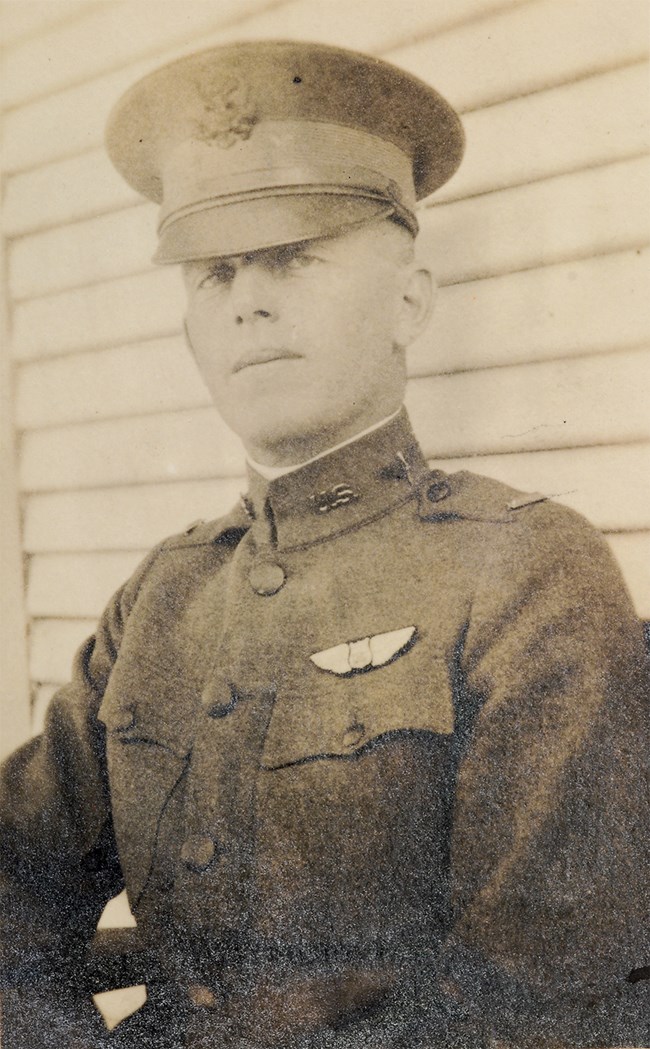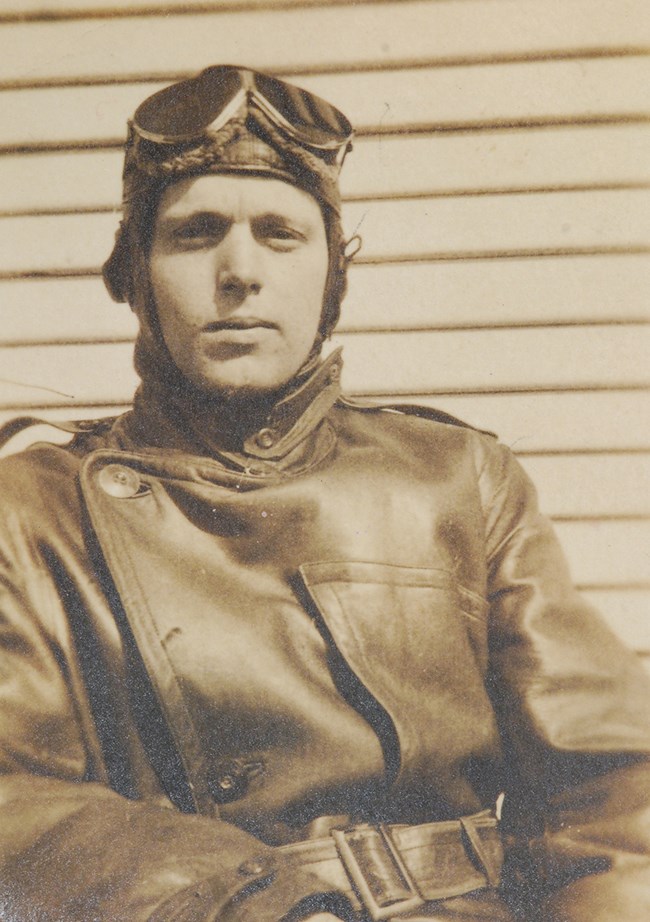Last updated: January 4, 2018
Article
Lieutenant Noel B. Evans and the 321st Observation Squadron at Pearson Field

NPS Photo

NPS Photo
Beginning in 1924, the unit was led by Lieutenant Oakley Kelly, one of the military's best known pilots. Under Kelly's leadership, the Army made a number of infrastructure improvements to Pearson Field, until it became known as one of the most developed military air fields on the West Coast. Kelly also worked to promote aviation throughout the Northwest - promoting record breaking flights and encouraging civilian aviators in Vancouver. In 1925, the field was expanded to make room for airmail planes and emerging commercial airlines. 1925 was also the year that the airfield was named Pearson Field after Lieutenant Alexander Pearson, a renowned Army aviator who had died the previous year.
Lt. Oakley Kelly commanded the squadron until 1929, when he was replaced by Captain Carlton F. Bond.

NPS Photo

NPS Photo
From 1925 to April 1932, Evans was a member of the 321st Observation Squadron at Pearson Field. During his time in the Northwest, Evans also worked for the Pacific Air Transport company as a relief pilot, flying planes between Portland, Seattle, San Francisco, and Los Angeles. Later, he also worked as a co-pilot for West Coast Air Transport. In 1930, when West Coast Air Transport was purchased by Western Air Express, Evans piloted tri-motored Fokker monoplane transports from Portland to San Francisco.
In January 1932, Evans left the Army and the Northwest, taking a job with Varney Speed Lines, flying between Los Angeles and San Francisco. Evans' life was tragically cut short in 1933, when his plane crashed in bad weather. At the time of his death, he had logged more than 4,200 flying hours.
Pearson Field was home to the 321st Observation Squadron until 1941. Many structures, including the historic hangar to the south of today's Pearson Air Museum, the headquarters building where Lt. Kelly's office was located, the munitions building to the east of the museum, and the grass field and runway, remain from this period.

NPS Photo
